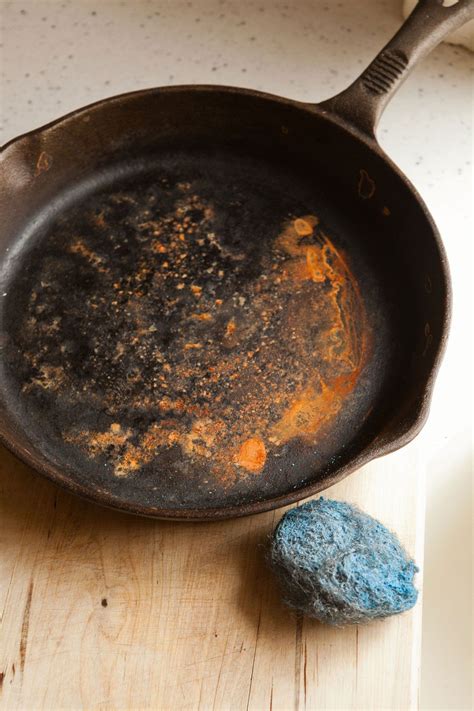How to Remove Rust from Your Cast Iron Pan: A Comprehensive Guide
Cast iron pans, prized for their durability and even heat distribution, can sometimes fall victim to rust. But don't despair! Rust doesn't mean the end of your beloved skillet. With the right approach, you can effectively remove rust and restore your cast iron to its former glory. This comprehensive guide will walk you through various methods, ensuring you choose the best technique for your pan's condition.
Understanding Cast Iron Rust
Before diving into removal methods, it's crucial to understand why your cast iron rusted. Rust occurs when iron reacts with oxygen and water. Improper seasoning (the process of creating a protective layer of oil on the pan's surface) or inadequate drying after washing are common culprits.
Assessing the Rust Damage
The severity of the rust will dictate the cleaning method you should employ. Lightly rusted pans will respond well to gentler techniques, while heavily rusted ones may require more aggressive approaches.
- Light Rust: Surface rust, appearing as light orange spots or discoloration.
- Moderate Rust: Rust has penetrated deeper, possibly pitting the surface slightly.
- Severe Rust: Extensive rust coverage, significant pitting, and potential flaking.
Methods for Rust Removal
Here are several methods to tackle rust, ranging from gentle to more intense:
1. For Light Rust: The Simple Scrub
For minor surface rust, a simple scrubbing can often suffice.
- Materials: Steel wool (fine grade), warm soapy water, vegetable oil.
- Process: Wash the pan with warm soapy water. Use fine steel wool to gently scrub away the rust. Rinse thoroughly and dry completely. Finally, re-season the pan with a thin layer of vegetable oil.
2. For Moderate Rust: The Vinegar Soak
A vinegar soak is a more effective method for tackling moderate rust.
- Materials: White vinegar, plastic or glass container (avoid metal!), steel wool (fine grade), vegetable oil.
- Process: Submerge the rusted pan in white vinegar, ensuring it's fully covered. Let it soak for several hours, or even overnight. Scrub with fine steel wool, rinse thoroughly, and dry completely. Re-season the pan.
3. For Moderate to Severe Rust: The Baking Soda Paste
For more stubborn rust, a baking soda paste can be highly effective.
- Materials: Baking soda, water, steel wool (medium grade), vegetable oil.
- Process: Make a paste of baking soda and water. Apply it generously to the rusted areas. Let it sit for 30 minutes to an hour. Scrub with medium-grade steel wool. Rinse thoroughly and dry completely. Re-season the pan.
4. For Severe Rust: The Electrolysis Method (Advanced)
Electrolysis is a more advanced technique for heavily rusted pans. This method requires specific equipment and should be approached with caution. It's best to research this method thoroughly before attempting it.
Preventing Future Rust
Preventing rust is key to maintaining your cast iron's longevity.
- Proper Seasoning: A well-seasoned pan is less prone to rust.
- Thorough Drying: Always dry your pan completely after washing.
- Oil Storage: Lightly coat the pan with oil and store it in a dry place.
Conclusion
Removing rust from your cast iron pan doesn't have to be daunting. By choosing the appropriate method based on the severity of the rust and following the steps carefully, you can restore your pan to its original condition and enjoy many more years of cooking delicious meals. Remember, patience is key, and re-seasoning is crucial for long-term rust prevention.
